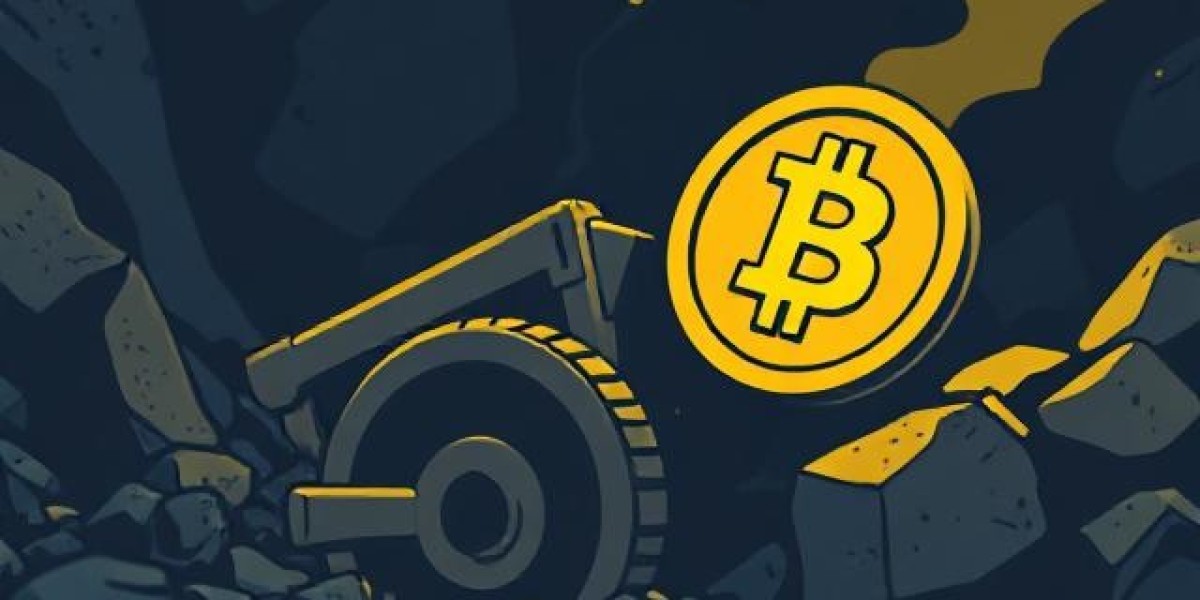In recent years, the popularity of cryptocurrency has skyrocketed, and one of the most talked-about aspects of the crypto world is Bitcoin mining. If you’ve ever wondered how to mine Bitcoin, you’re not alone. With its promise of financial returns and its fascinating technology, Bitcoin mining is an area that attracts both tech enthusiasts and investors. In this guide, we’ll walk you through what Bitcoin mining is, how it works, what you need to get started, and some key considerations before jumping in.
What is Bitcoin Mining?
Before diving into how to mine Bitcoin, it’s important to understand what Bitcoin mining actually is. Bitcoin mining is the process of verifying and adding new transactions to the Bitcoin blockchain. It is a decentralized computational process performed by miners around the world. These miners use powerful computers to solve complex mathematical problems. The first miner to solve the puzzle gets to add the block of transactions to the blockchain and is rewarded with newly minted Bitcoins—a process known as the block reward.
How Does Bitcoin Mining Work?
Bitcoin operates on a decentralized ledger system called the blockchain, which records all transactions across a network of computers. Miners validate transactions by solving cryptographic puzzles. This process, known as Proof of Work, is crucial to the integrity and security of the Bitcoin network.
Here’s a simplified step-by-step of how Bitcoin mining works:
Transaction Pool: When a transaction occurs, it is broadcast to the network and joins a pool of unconfirmed transactions.
Block Formation: Miners collect these transactions into a block.
Proof of Work: Miners compete to solve a cryptographic hash function. This requires substantial computational power and energy.
Block Addition: The first miner to solve the puzzle broadcasts the solution. Other miners verify it, and the block is added to the blockchain.
Reward: The winning miner receives a block reward in Bitcoin and any transaction fees from the included transactions.
What Do You Need to Mine Bitcoin?
If you’re researching how to mine Bitcoin, you’ll need to understand the hardware and software requirements. Bitcoin mining is no longer viable using regular computers or even high-end gaming PCs. Here’s what you need:
1. Mining Hardware
ASIC Miners (Application-Specific Integrated Circuit): These machines are specifically designed for mining Bitcoin. They are far more efficient and powerful than traditional GPUs or CPUs. Examples include the Bitmain Antminer and MicroBT WhatsMiner.
2. Mining Software
You’ll need specialized software that connects your hardware to the Bitcoin network. Popular options include CGMiner, BFGMiner, and EasyMiner.
3. Bitcoin Wallet
Before you start mining, set up a secure Bitcoin wallet to receive and store your earnings. Wallets can be software-based (like Electrum) or hardware-based (like Ledger or Trezor).
4. Electricity and Internet
Mining consumes a lot of electricity. Make sure you have a reliable power source and a stable internet connection.
Solo Mining vs. Mining Pools
There are two primary ways to mine Bitcoin: solo mining and mining pools.
Solo Mining: This means mining by yourself. You keep the entire reward if you successfully mine a block. However, the chances of doing so are very low due to the high difficulty level.
Mining Pools: In a pool, you combine your computing power with other miners. Rewards are shared proportionally among members. This increases the chances of earning a consistent income, though each payout is smaller.
Profitability and Costs
Learning how to mine Bitcoin is only the beginning. It's crucial to consider whether it’s profitable. Here are key factors to consider:
Electricity Costs: The largest expense in mining. ASIC machines consume a significant amount of electricity.
Hardware Costs: High-performance miners are expensive and need to be replaced periodically.
Mining Difficulty: As more miners join the network, the difficulty increases, requiring even more computing power.
Bitcoin Price: Your profitability is directly tied to the price of Bitcoin. A drop in price could make mining unprofitable.
You can use online mining profitability calculators to estimate your potential earnings based on your hardware, electricity rate, and Bitcoin’s current value.
Legal and Environmental Considerations
Before you start mining, check local regulations. In some countries, cryptocurrency mining is restricted or heavily taxed. Additionally, the environmental impact of Bitcoin mining has come under scrutiny due to its high energy consumption. Some miners are turning to renewable energy sources to reduce their carbon footprint.
Conclusion
Understanding how to mine Bitcoin involves more than just setting up a machine. It’s about evaluating the cost, complexity, and commitment required. As the Bitcoin network grows and mining becomes more competitive, success requires not only the right hardware and software but also a strategic approach.
If you’re willing to invest in the necessary resources and stay informed about the crypto landscape, Bitcoin mining can be a rewarding venture. Just remember to consider both the financial and environmental implications of your decision. Whether you join a mining pool or mine solo, being well-prepared is key to navigating the exciting world of cryptocurrency mining.








